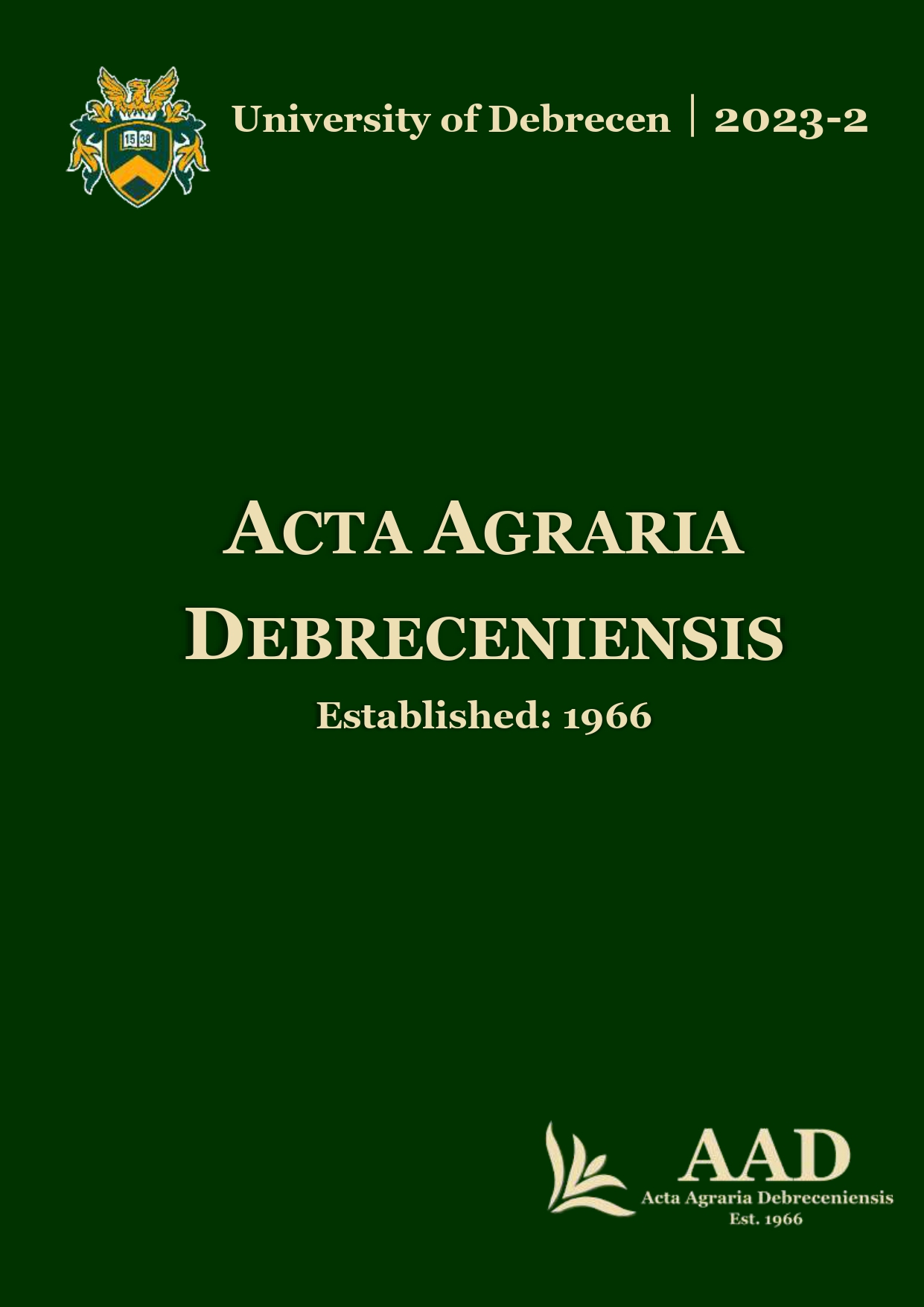The potential of biological control on invasive weed species
Authors
View
Keywords
License
Copyright (c) 2023 by the Author(s)

This work is licensed under a Creative Commons Attribution 4.0 International License.
How To Cite
Accepted 2023-09-18
Published 2023-12-01
Abstract
Sorghum halepense is one of the invasive species in Europe. This study was made to identify the morphology of fungi on invasive weed species samples on the roots of Sorghum halepense. The samples were collected in the region of Debrecen. The experiment was conducted under laboratory conditions to determine the microscopic form of fungi. The samples were put on PDA and for identification of fungi is based on the morphological characteristics of the features and colonies of conidia that were developed in Petri dishes.
The examination of the culture revealed that the fungus from the root of Sorghum halepense was Aspergillus niger. Pathogenicity and the relationship between the fungus and Sorghum halepense are still uncertain so in the future pathogenicity tests and re-isolations from plants are very important steps.
References
- Barnett, H.L.–Hunter, B.B. (1998): Illustrated genera of imperfect fungi 4th Edition. St. Paul, MN.
- Barney, J.N.–DiTomaso, J.M. (2011): Global climate niche estimates for bioenergy crops and invasive species of agronomic origin: potential problems and opportunities. PLoS One, 6(3), e17222. https://doi.org/10.1371/journal.pone.0017222
- Bruckart, W.L.–Hasan, S. (1991): Options with plant pathogens intended for classical control of range and pasture weeds. [In: TeBeest, D.O. (ed.) Microbial Control of Weeds.] Chapman & Hall. New York. 69–79.
- Bordin, E.R.–Frumi Camargo, A.–Stefanski, F.S.–Scapini, T.–Bonatto, C.–Zanivan, J.–Treichel, H. (2021): Current production of bioherbicides: mechanisms of action and technical and scientific challenges to improve food and environmental security. Biocatalysis and Biotransformation, 39(5), 346–359. https://doi.org/10.1080/10242422.2020.1833864.
- Charudattan, R.–Dinoor, A. (2000): Biological control of weeds using plant pathogens: accomplishments and limitations. Crop Protection, 19(8–10), 691–695. https://doi.org/10.1016/S0261-2194(00)00092-2.
- Heap, I. (2022): Current Status of the International Herbicide-Resistant Weed Database. The International Herbicide-Resistant Weed Database. Available online: http://www.weedscience.org (accessed on 26 October, 2022).
- Holm, L.–G.Plucknett, D.L.–Pancho, J.V.–Herberger, J.P. (1977): The world's worst weeds. Distribution and biology. University Press of Hawaii.
- Kangarloo, S.–Montazeri, M.–Pezeshki, N.–Angadji, J. (2014): Identification of some fungal pathogens of Johnson grass (Sorghum halepense). The 6th Iran Weed Science Conference. Non-chemical and integrated management of weeds
- Korres, N.E.–Burgos, N.R.–Travlos, I.–Vurro, M.–Gitsopoulos, T.K.–Varanasi, V.K.–Salas-Perez, R. (2019): New directions for integrated weed management: Modern technologies, tools and knowledge discovery. Advances in Agronomy, 155, 243–319 https://doi.org/10.1016/bs.agron.2019.01.006.
- Novák, R.– Dancza, I.– Szentey, L.– Karamán, J.–Béres, I.–Kazinczi, G.–Gólya, G. (2009): Arable Weeds of Hungary-Fifth National Weed Survey (2007 2008). Ministry of Agriculture and Rural Development, Budapest, Hungary. Report.
- Oerke, E.C.–Dehne, H.W. (2004): Safeguarding production—losses in major crops and the role of crop protection. Crop protection, 23(4), 275–285. https://doi.org/10.1016/j.cropro.2003.10.001
- Oerke, E.C. (2006): Crop losses to pests. The Journal of Agricultural Science, 144(1), 31–43.
- TeBeest, D.O.–Templeton, G.E. (1985): Mycoherbicides: Progress in the Biologic. Plant disease, 69(1), 7.
- Walker, H.L.–Riley, J.A. (1982): Evaluation of Alternaria cassiae for the biocontrol of sicklepod (Cassia obtusifolia). Weed Science, 30(6),651–654. ttps://doi.org/10.1017/S0043174500041369
- Watson, A.K. (1991): The classical approach with plant pathogens. In Microbial control of weeds (pp. 3–23). Springer, Boston, MA.
- Winder, R.S.–Van Dyke, C.G. (1990): The pathogenicity, virulence, and biocontrol potential of two Bipolaris species on johnsongrass (Sorghum halepense). Weed Science, 38(1), 89–94. https://doi.org/10.1017/S0043174500056162

 https://doi.org/10.34101/actaagrar/2/12028
https://doi.org/10.34101/actaagrar/2/12028